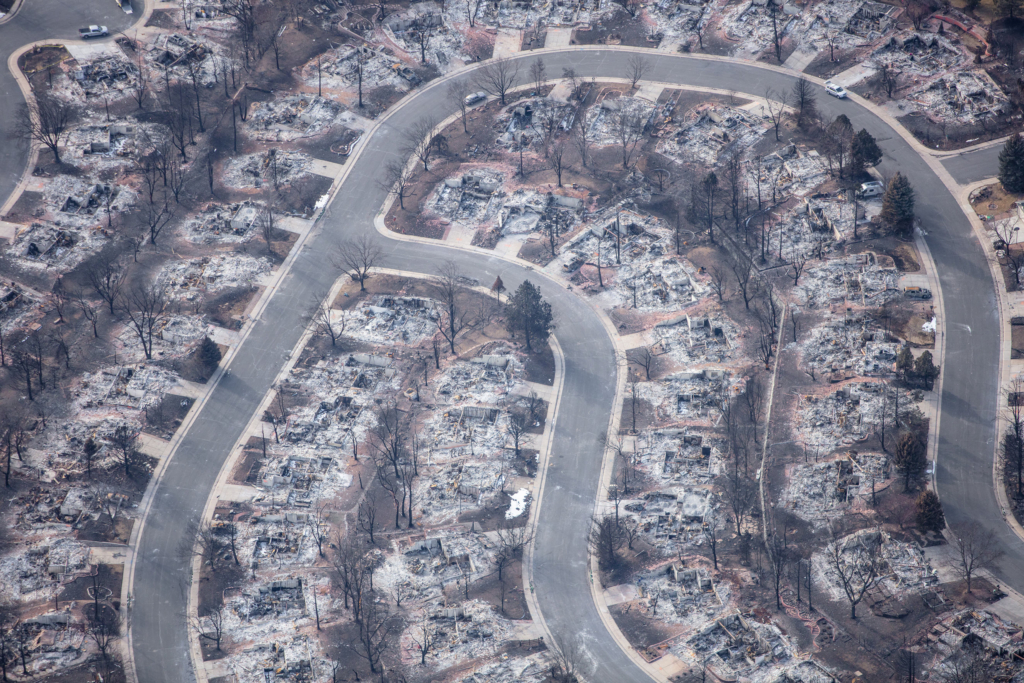The 2025 General Assembly passed HB 25-1182, Risk Model Use in Property Insurance Policies, legislation that updates the requirements concerning wildfire and catastrophe risk modeling used by Property & Casualty (P&C) homeowners’ insurance carriers. Below is an outline of specific changes mandated by the bill.
Background
The Division of Insurance (DOI) worked in advance of session to gain support for a bill concept concerning how P&C homeowners’ insurance carriers model wildfire risk scores for purposes of underwriting. Commissioner Michael Conway had expressed skepticism that the wildfire risk model that most P&C insurance carriers currently use produces accurate risk scores. He planned a bill to require the use of one or more risk models that can accurately assess the risk of wildfire at the individual home level (considering any mitigation that had been performed), the community level, and at the state level.
Bill Introduction and Passage
Reps. Kyle Brown (D) and Brianna Titone (D) introduced HB 25-1182 in early February, and Hall & Evans began working with the P&C insurance industry on amendments before it was heard in the House Business Affairs & Labor Committee. The House adopted many of the industry’s suggested changes, passing several amendments in Committee and on the House floor. The Senate then amended the bill to ensure it applied only to homeowners’ insurance policies, and to policies covering residential condominium properties and multi-family residential properties, but not to all other commercial properties. HB 25-1182 re-passed in the House and was sent to the Governor in early May. Governor Polis signed the bill in early June, and it will take effect on August 6, 2025.
HB 25-1182 Outline and Key Changes
HB 25-1182 establishes the following new requirements for carriers:
Disclosure Requirements
- Requires insurers using any such model or scoring method to submit the following information, along with their rate filings, to the DOI:
- The model or tool used;
- A description of the model;
- How the model impacts underwriting and pricing;
- Actuarial justification for all rating factors, including mitigation discounts;
- If available, data showing whether the model accounts for state-level mitigation efforts, such as forest treatment or investment in wildfire fighting equipment.
- Note that these filings are treated as trade secrets and are not subject to disclosure under the Colorado Open Records Act (CORA).
Model Requirements and Discounts
- Models or underwriting processes must incorporate or account for property-specific mitigation measures and community mitigation actions (but not state-level actions, which were amended out of the bill).
- If an insurer does not incorporate property-specific and community-level mitigation actions into its models, the insurer must provide discounts to policyholders who can demonstrate such mitigation actions have been undertaken.
Public Transparency and Policyholder Communications
- Insurers must post on their website:
- Details on premium reductions tied to mitigation; and
- A process for appealing a wildfire risk score.
- Insurers also must give annual written notice to each applicant or policyholder that informs them of:
- Their wildfire risk score or classification;
- Applicable mitigation discounts; and
- Any wildfire-based rate differentials, surcharges, or nonrenewal decisions.
Wildfire Risk Score Timelines
- Insurers must provide applicants with their wildfire risk score within 15 days after the submission of the application;
- For policyholders, the score must be provided in the offer of renewal or the nonrenewal notice; and
- For policyholders or applicants who have completed a property-specific mitigation action or provided evidence of a community-level mitigation action, the score must be provided within 30 days after the submission of a request for a revised wildfire risk score.
Appeal Process
- Policyholders may directly appeal their wildfire risk scores or mitigation discount eligibility.
- Insurers must acknowledge receipt of the appeal within 10 calendar days and respond with a decision within 30 calendar days.
- If the insurer denies the appeal, it must submit its reasoning to the DOI upon request.
Coverage Scope
- HB 25-1182 applies to homeowners’ insurance, residential condominium coverage, multi-family residential housing, and FAIR plan policies.
Key Terms
- Broadly defines wildfire risk model and catastrophe model to include any map-, computer-, or simulation-based tools used in underwriting or rating;
- Defines property-specific mitigation action as a science-based mitigation action as demonstrated by the “Wildfire Prepared Home” designation from the Insurance Institute for Business and Home Safety (IBHS), or by a similar mitigation program;
- Defines community-level mitigation to include science-based neighborhood or government initiatives.
Rulemaking Authority
- The DOI is authorized to adopt rules to implement these provisions.

